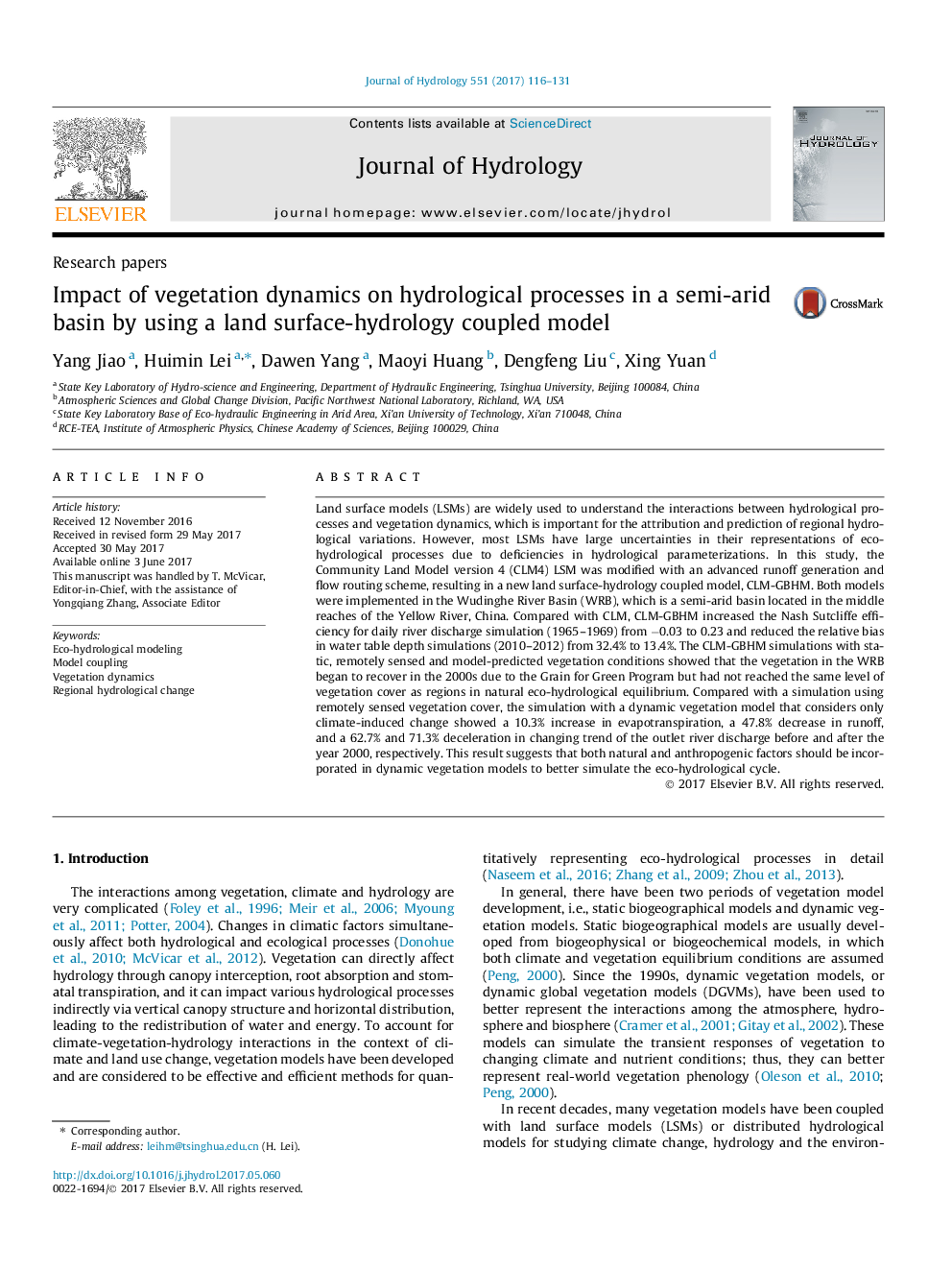| کد مقاله | کد نشریه | سال انتشار | مقاله انگلیسی | نسخه تمام متن |
|---|---|---|---|---|
| 5770890 | 1629903 | 2017 | 16 صفحه PDF | دانلود رایگان |

- Improved CLM performance by coupling a hydrological model.
- Vegetation dynamics caused higher ET, lower runoff and soil moisture content.
- Changing trend of discharge decelerated when considering vegetation dynamics.
Land surface models (LSMs) are widely used to understand the interactions between hydrological processes and vegetation dynamics, which is important for the attribution and prediction of regional hydrological variations. However, most LSMs have large uncertainties in their representations of eco-hydrological processes due to deficiencies in hydrological parameterizations. In this study, the Community Land Model version 4 (CLM4) LSM was modified with an advanced runoff generation and flow routing scheme, resulting in a new land surface-hydrology coupled model, CLM-GBHM. Both models were implemented in the Wudinghe River Basin (WRB), which is a semi-arid basin located in the middle reaches of the Yellow River, China. Compared with CLM, CLM-GBHM increased the Nash Sutcliffe efficiency for daily river discharge simulation (1965-1969) from â0.03 to 0.23 and reduced the relative bias in water table depth simulations (2010-2012) from 32.4% to 13.4%. The CLM-GBHM simulations with static, remotely sensed and model-predicted vegetation conditions showed that the vegetation in the WRB began to recover in the 2000s due to the Grain for Green Program but had not reached the same level of vegetation cover as regions in natural eco-hydrological equilibrium. Compared with a simulation using remotely sensed vegetation cover, the simulation with a dynamic vegetation model that considers only climate-induced change showed a 10.3% increase in evapotranspiration, a 47.8% decrease in runoff, and a 62.7% and 71.3% deceleration in changing trend of the outlet river discharge before and after the year 2000, respectively. This result suggests that both natural and anthropogenic factors should be incorporated in dynamic vegetation models to better simulate the eco-hydrological cycle.
Journal: Journal of Hydrology - Volume 551, August 2017, Pages 116-131